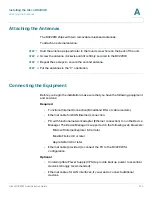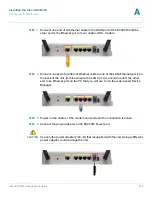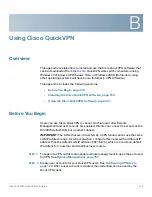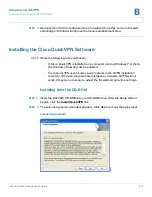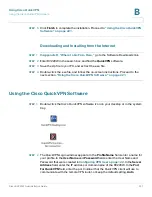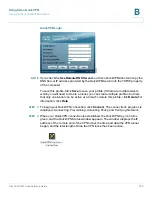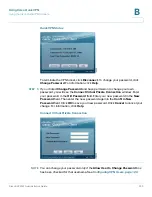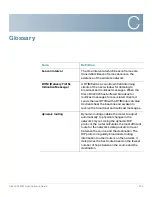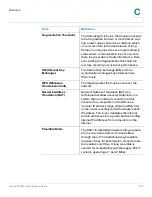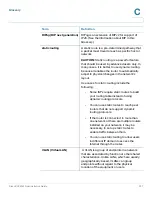
Glossary
Cisco RV220W Administration Guide
227
C
RIPng (RIP next generation)
RIPng is an extension of RIPv2 for support of
IPv6. (See the information about RIP in this
Glossary.)
static routing
A static route is a pre-determined pathway that
a packet must travel to reach a specific host or
network.
CAUTION:
Static routing is a powerful feature
that should be used by advanced users only. In
many cases, it is better to use dynamic routing
because it enables the router to automatically
adjust to physical changes in the network’s
layout.
Use cases for static routing include the
following:
•
Some ISPs require static routes to build
your routing table instead of using
dynamic routing protocols.
•
You can use static routes to reach peer
routers that do not support dynamic
routing protocols.
•
If the router is connected to more than
one network or there are multiple routers
installed on your network, it may be
necessary to set up static routes to
enable traffic between them.
•
You can use static routing to allow users
in different IP domain to access the
Internet through the router.
VLAN (Virtual LAN)
A VLAN is a group of endpoints in a network
that are associated by function or other shared
characteristics. Unlike LANs, which are usually
geographically based, VLANs can group
endpoints without regard to the physical
location of the equipment or users.
Term
Definition


